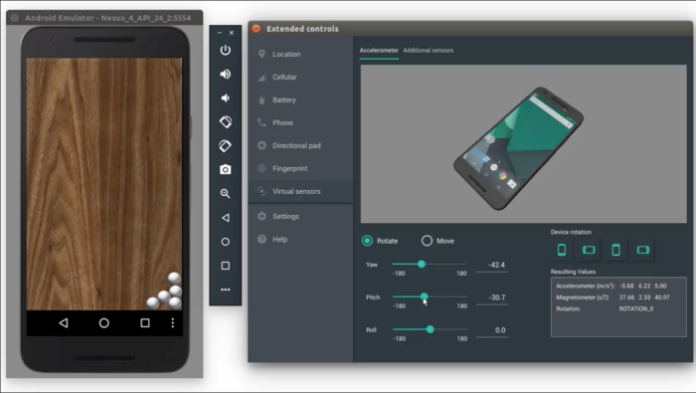Have you ever thought how nice it would be to actually be able to perform on the big screen or a computer monitor all those activities you do on your phone? If you’ve ever researched at least a little bit about this, you might have bumped into the Android emulator concept. Why is this software so desirable for improving PC usage? It basically works like a magic wand that will turn your computer into a mobile device, while allowing you to use the Google Play apps or any other type of Android features on your PC, in any version of Windows. Just imagine enjoying dozens of games, as well as many other digital aids of all shapes and types. The best way to spend some fun time with your favorite entertainment apps is by looking at a screen that is at eye level, which can actually convert in a true benefit for your neck.
And this isn’t the only upper hand of this miraculous thing: it enables application testing for developers and programming specialists on various devices. So, now when we tried to make you realize how convenient and useful this software is, it’s time to give you insight into its performance and way of functioning.
1. First of all, there’s a so-called quick emulator (QEMU), which plays the role of a virtualizing tool, but that’s only one of its multiple uses and powers. Its task is to imitate the hardware part to try to perform the matching between the guest and the host component. Of course, to implement this, the system needs to be rather strong and powerful, or otherwise, this procedure might turn into a slow-as-molasses-in-January nightmare.

2. Hypervisors are components that allow you to perform translation of CPU architectures and make them go more quickly and systematically.
3. In order to be able to install this and enjoy it without issues, some requirements need to be completed and entirely followed. Specialists say that your SDK shouldn’t be below 26.1.1 or otherwise, it won’t work; also, nothing will go as planned if you don’t have at least a 64-bit processor to brag with. In case you’re trying to install it on Linux OS, you’ll need a couple of additional elements like AMD-V or SIMD set 3; and if you’re doing it on Windows, you need to have API and Android Studio 3.2 – not below that.
4. Once you finish the installation process, the final result should be a successfully implemented utensil characterized by the specifications you’ve set by yourself which works properly and performs any of its potential functions correctly.
Some good sides and uses:

Many users use emulators to enjoy games more comfortably since the controls on mobile phones can be a little bit uncomfortable or difficult to handle. When using a computer, they have the possibility of operating at character by using the keyboard and mouse. In addition to that, there’s a bunch of players who are used to using a computer but who love any type of game and potentially want to bring the experience of a mobile phone to PC and enjoy it from this device. Here you can take a look at LDPlayer, which is a perfect example of the app that’s specially designed for gaming stuff.
Fullscreen, fullscreen, FULLSCREEN.

More advanced users and the ones with a greater knowledge of programming can also use these emulators to run the test versions of their applications and check any faults or defects that might emerge. Of course, this gives them a better opportunity to enhance it until they level it up to its final version and upload it for download.
Regarding data transfer, it’s easy to notice that everything goes much faster and quite smoothly.
This will particularly save the lifespan of your mobile phone battery.

Unlike on the phone, where you need to go from one screen to another and stop the song on YouTube when you want to reply to your Messenger conversations, here you’ll mostly be able to use multiple programs or applications at the same time without worries. Normally, you can’t expect this characteristic to be present in each and every software of this type, but many of them will actually provide you with this option.
Some bad sides:

If you’re a PC owner whose machine doesn’t have enough RAM on it, for example, less than 4GB, this software probably won’t work as well as you imagined. This could be characterized as a regular issue and it’s quite understandable, so if you’re trying to implement it, make sure you have plenty of space.
Some games that you play like this might look less attractive in some cases.
Stutters and bugs happen, especially if your PC isn’t strong enough or if it hardly exceeds the minimum requirements, so you should be aware of this while deciding if you’d do it or not – just to prevent yourself from some nerve-wracking moments.
It might be weird or less comfortable to switch to the keyboard when it comes to mobile apps and games, but this should be a matter of routine.

Particular pieces of software don’t support some apps, for example, social networks, so make sure you get well-informed before you install one, so that it could be easily adapted to all the applications you’re planning to use there.
We could speak about extremely functional features of this kind of virtual accessory for hours – and there would always be so many new things to say, more pieces of advice to adopt and more questions. Naturally, not everyone needs an Android emulator – some people simply feel more comfortable with holding the phone in their hands and it’s absolutely okay. Not everyone wants to sit at the computer desk or to deal with a keyboard or a mouse instead of sliding up and down the touchscreen. But, for those who were waiting for something like this or miraculously haven’t heard about it until now, it could make a difference. Better said, it might be an introduction to some new horizons and the facilitation of many small, but still annoying issues they face in performing tasks on their mobile phone. Life has just become easier, hasn’t it?









